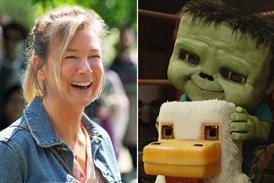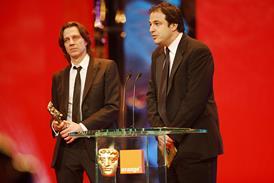As the summer blockbusters start rolling out of Hollywood, we should appreciate the skill that goes into making them so addictive.
In Drew Goddard and Joss Whedon’s new film The Cabin In The Woods, the patterns of the American horror movie are deconstructed with knowing humour. Five college kid stereotypes - jock, slut, brainiac, joker and virgin - go to the titular cabin for a weekend of blood-curdling mayhem that is literally manufactured for them. It’s a film which deconstructs what we expect from this genre while delivering us the ride we are used to.
I often find myself trying to deconstruct staple studio product and analyse why we continue to consume the same stock characters and situations repackaged with different actors and settings. My conclusion is that our appetite for these movies is like a mild drug addiction: the production values are pleasing, the actors attractive and we know exactly what we are going to get.
How many times have we teared up at a climactic romantic clinch or cheered a heroic act, when we knew they were inevitable? Studios even go so far as to reveal key moments in a trailer so that we know we will get what we want. We are shamelessly manipulated by these films, the same buttons pushed each time out, and that familiarity and lack of surprise is what makes them addictive.
Most frequent filmgoers might prefer a Fincher or Almodovar movie, but that won’t stop them going to see Battleship and wolfing down the latest earth invasion blockbuster clone as if it were a Big Mac.
It all comes down to the mental demands made by different types of films. Each story, whether a five minute short or three hour opus, requires the viewer to engage with milieu, characters and story and that expends a certain amount of mental energy. Standard Hollywood movies are designed with precision to make that engagement process as easy as possible. The LA production machine has developed a myriad of familiar situations that can be manipulated in a myriad ofdifferent ways to welcome in the audience. It doesn’t matter if it’s a horror film, a romcom or a superhero movie, it takes a few scenes before we know the drill. We welcome the storytelling mechanics.
On the other side, there are films that don’t tell us how to feel or hit us over the head with message, sentimentality or visual spectacle. These are the films dubbed “art films”, stories whose ups and downs cannot be predicted, which pique the subconscious and make us work harder to draw out meaning. These films do not adhere to easy narrative conventions and most of the time do not end happily. They don’t march to the furiously paced beat of a studio production, nor tell us how to feel.
Of course these films are ultimately more rewarding than the easy embrace of a Hollywood movie but they require more mental energy.
Watching three demanding films in Cannes selection in a day I find myself exhausted. It’s hardly a physically taxing day - seven or eight hours sitting down in a cinema - but the mental exercise is often gruelling.
I have noticed lately that at the end of a hard-working day, I avoid the more challenging films at home and choose instead the comfy familiarity of a Jennifer Aniston romcom or an old summer blockbuster. Like a TV series where you already know the characters, these titles require minimal mental exertion.
It’s easy to dismiss Hollywood for its inane output, but I sometimes feel we underestimate the intelligence that goes into their slickly manufactured product. It may not be remotely demanding of our mental faculties, but it is easy to engage with - and makes for great viewing on a plane.
As Cannes looms with all its art treasures and at the same time the studio big guns start their summer tentpole rollout, frequent cinemagoers will be faced with both extremes of mental taxation. Most will opt for a combination of the two.





















No comments yet